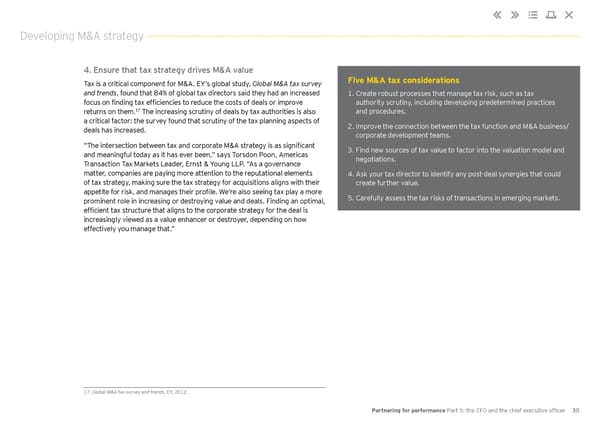Developing M&A strategy 4. Ensure that tax strategy drives M&A value Tax is a critical component for M&A. EY’s global study, Global M&A tax survey Five M&A tax considerations and trends, found that 84% of global tax directors said they had an increased 1. Create robust processes that manage tax risk, such as tax focus on finding tax efficiencies to reduce the costs of deals or improve authority scrutiny, including developing predetermined practices 17 and procedures. returns on them. The increasing scrutiny of deals by tax authorities is also a critical factor: the survey found that scrutiny of the tax planning aspects of 2. Improve the connection between the tax function and M&A business/ deals has increased. corporate development teams. “The intersection between tax and corporate M&A strategy is as significant 3. Find new sources of tax value to factor into the valuation model and and meaningful today as it has ever been,” says Torsdon Poon, Americas negotiations. Transaction Tax Markets Leader, Ernst & Young LLP. “As a governance matter, companies are paying more attention to the reputational elements 4. Ask your tax director to identify any post-deal synergies that could of tax strategy, making sure the tax strategy for acquisitions aligns with their create further value. appetite for risk, and manages their profile. We’re also seeing tax play a more 5. Carefully assess the tax risks of transactions in emerging markets. prominent role in increasing or destroying value and deals. Finding an optimal, efficient tax structure that aligns to the corporate strategy for the deal is increasingly viewed as a value enhancer or destroyer, depending on how effectively you manage that.” 17. Global M&A tax survey and trends, EY, 2012. Partnering for performance Part 5: the CFO and the chief executive officer 30
 Partnering for Performance Part 5 Page 31 Page 33
Partnering for Performance Part 5 Page 31 Page 33